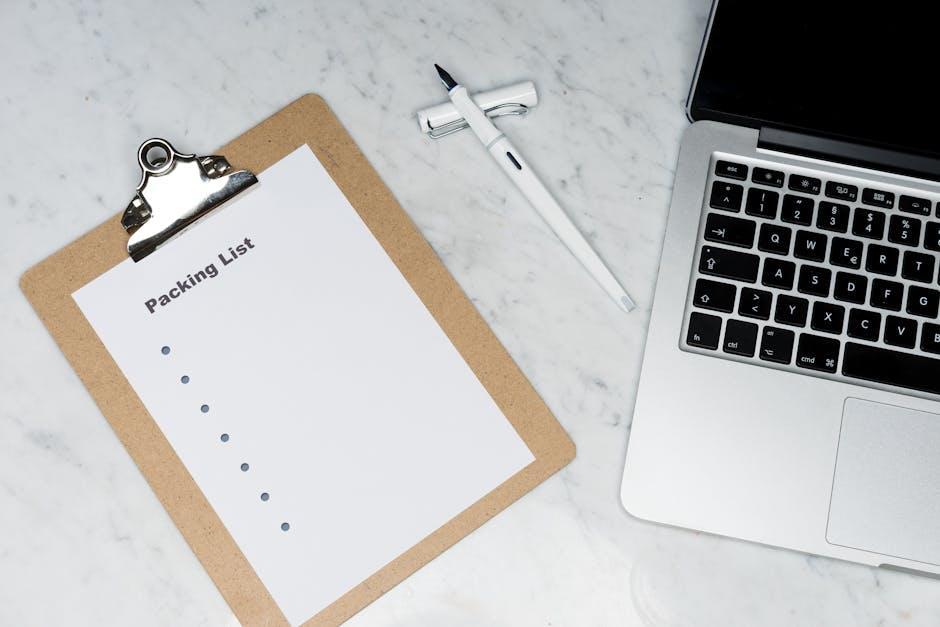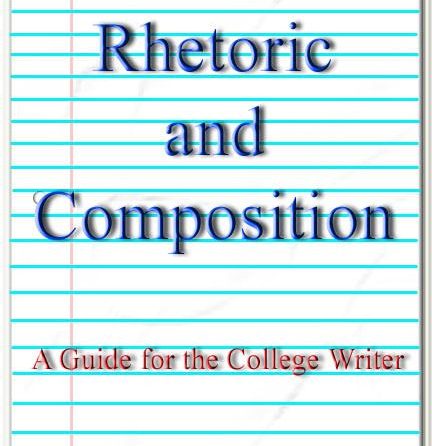A thorough analysis of Leo Diegel’s golf instruction techniques reveals critically important contributions to the sport that continue to resonate today. Diegel, a distinguished golfer recognized for his competitive achievements and innovative teaching methods, broke away from conventional approaches to the game. His distinctive style, particularly in putting, along with his strategies for tackling common golfer challenges, showcases a profound understanding of the mechanics and psychology of golf.
Diegel’s instructional philosophy, as outlined in his co-authored book “The Nine Bad Shots of Golf,” emphasizes a systematic approach to identifying and rectifying flaws in a golfer’s performance. By focusing on practical techniques that target specific areas of difficulty, Diegel’s methods effectively bridge the gap between technique and performance, creating an environment conducive to golfer development. His elbow-out technique and the subsequent “Diegeling” style have not only influenced his contemporaries but have also been embraced by modern golfers, highlighting the enduring impact of his teachings.
This exploration aims to dissect the intricacies of Diegel’s instructional methods, examining their theoretical underpinnings and practical applications within the framework of contemporary golf training. Through this analysis, we seek to illuminate the relevance of Diegel’s techniques in the ongoing conversation surrounding golf instruction, establishing a foundation for both understanding and applying his contributions to the sport.
Historical Context of Leo Diegel’s Teaching Philosophy
In the late 1920s and early 1930s, a transformative shift occurred in golf instruction, driven by an increasing focus on technical precision and the psychological dimensions of the game. Leo Diegel emerged as a pivotal figure during this time, particularly through his innovative emphasis on the role of the hands in swinging techniques. His teaching philosophy marked a departure from earlier, more rigid methods, embracing a more fluid and adaptable approach. As a three-time PGA Champion, Diegel’s success provided him with a platform to advocate for techniques that resonated with both amateur and professional golfers.
Diegel’s teachings mirrored the cultural shift towards performance-oriented training. He believed that while physical skill and technique were essential, mastering hand dynamics was crucial for success on the course. His **key principles** included:
- Hand Positioning: highlighting the importance of correct hand placement relative to the clubface.
- Feel and sensitivity: Encouraging golfers to cultivate a tactile awareness of their swings, promoting instinctive responses.
- Personalization of Techniques: Advocating for golfers to adapt techniques to suit their individual styles and physical characteristics.
In the post-war era, Diegel’s methods gained popularity as golfers sought to enhance their skills amid rising competition. His insights into the psychological aspects of the sport, where visualization and mental resilience play vital roles, further enriched his instructional legacy. Collaborations with contemporaries like Tommy Armour and Johnny Farrell fostered a network of shared techniques that influenced the evolution of golf instruction in the mid-20th century. As golf’s popularity soared, Diegel’s philosophies not only shaped professional coaching but also left a lasting imprint on the broader golfing community.
Key Principles of Diegel’s Swing Mechanics
Leo Diegel’s swing mechanics are rooted in a combination of physiological insights and practical execution, with a strong emphasis on **balance** and **core stability**. This foundational principle underscores the necessity of maintaining a solid center of gravity, enabling golfers to execute swings with both power and precision. By encouraging students to engage their core muscles, Diegel promotes a swing that is not only efficient but also reduces the risk of injury.
Another crucial element of Diegel’s instructional approach is the integration of **rhythm and tempo** in the swing. He believed that a harmonious swing rhythm could substantially enhance a golfer’s consistency and accuracy. This principle can be broken down into key components, including:
- Initiation: Commencing the swing with a relaxed yet purposeful movement.
- Acceleration: Maximizing clubhead speed through a smooth transition at the top of the swing.
- Deceleration: Gradually slowing down after impact to maintain balance and control.
Lastly, Diegel emphasized the importance of proper **weight transfer** throughout the swing. His approach instructs golfers to effectively shift their weight from the back foot to the front foot while maintaining alignment and posture. The following table summarizes the key phases of weight transfer in the swing:
| Phase | Description |
|---|---|
| Backswing | Weight shifts to the back foot, generating potential energy. |
| Transition | Initiate the shift to the front foot, engaging the core. |
| Downswing | Weight transfers forward, allowing for maximum power at impact. |
The Role of Mental Acuity in Diegel’s Instruction
Leo Diegel, celebrated for his innovative teaching methods, placed considerable emphasis on the mental aspects of golf instruction. His approach was grounded in the belief that a golfer’s success is influenced not only by physical abilities but also by mental acuity. Key components of this mental training included:
- Visualization Techniques: Diegel encouraged students to visualize their shots before execution, fostering confidence and mental clarity.
- Focus and Concentration: He stressed the importance of maintaining focus during practice and competitive play, advocating for drills that enhance concentration under pressure.
- Emotional Management: Recognizing the emotional ups and downs of golf, he taught players strategies to manage frustration and maintain composure.
Diegel’s instruction also integrated psychological principles, promoting a holistic view of golf as both a mental and physical game. By addressing cognitive processes, he aimed to improve decision-making and shot selection. His teaching methods included:
| Technique | Description |
|---|---|
| Mindfulness exercises | Practices to enhance present-moment awareness during play. |
| Routine Development | Establishing pre-shot routines to alleviate anxiety. |
| Positive Affirmations | Utilizing encouraging self-talk to boost confidence. |
Ultimately, Diegel’s methodologies highlight the significance of the mental game, recognizing that excellence in golf requires both physical skill and mental resilience. His ability to integrate these elements into his teaching provided a comprehensive framework for golfers to consistently enhance their performance. By focusing on both mind and body, Diegel paved the way for modern golf instruction that prioritizes psychological readiness alongside technical skill.
Comparative Analysis of Diegel’s Techniques and Modern Practices
Leo Diegel’s approach to golf instruction was notable for its emphasis on the **fundamentals of the game**. His techniques focused primarily on the **physicality of the swing** and the importance of a solid, repeatable motion. In contrast, modern instructors often employ a more scientific approach, utilizing technology to analyze swings in real time. While Diegel prioritized **feel and intuition**, contemporary practices integrate data-driven feedback and video analysis, providing golfers with tangible metrics to enhance their performance.
Another distinguishing aspect of Diegel’s method was his unique mental approach to the game. He instilled resilience and confidence in his students, often emphasizing the psychological components of golf. In contrast, modern teaching paradigms tend to focus on **mental conditioning** through structured programs and sports psychology. While Diegel’s techniques fostered a personal connection between instructor and student, contemporary methods often involve workshops centered on visualization, routine building, and mental strategy.
One of Diegel’s most controversial techniques was his unconventional putting style, characterized by a highly individualized grip and stance. This sharply contrasts with current practices that advocate for standardized techniques to promote consistency across all aspects of the game. Today’s instructors may critique Diegel’s methods as overly unique, arguing that they lack the uniformity essential for replicable success on the course. This divergence raises questions about the balance between **individuality in technique and adherence to established norms**, a topic that invites further scholarly debate within the realm of golf instruction.
Practical Applications and Recommendations for Golf Instructors
Golf instructors looking to incorporate Leo Diegel’s methodologies into their practice should adopt a multifaceted approach. Diegel emphasized the importance of **hand positioning**, which can be taught through specific drills and exercises. Instructors can utilize tools such as:
- Life-size Mirrors: These can be invaluable for players to visualize their hand placement and overall posture during swings.
- Grip Trainers: Incorporating grips that promote proper hand positioning can help students internalize correct techniques.
Additionally, Diegel’s innovative drills for putting can be advantageous for instructors focusing on short game advancement. His unique approach involved modifying traditional practices to enhance feel and control on the greens. Instructors should implement drills that include:
- Target-centric Putting Routines: Create an environment where students focus on specific targets to develop precision.
- Varied Distance Challenges: Encouraging players to vary their distance from the hole will build adaptability and confidence in their putting skills.
Understanding the psychological aspect of Diegel’s teaching is also crucial. He instilled a mindset where students must learn to manage pressure during competition. Instructors can foster this through:
| Training Technique | Description |
|---|---|
| Simulated Pressure Situations | Create game-like scenarios in practice to mimic actual tournament pressure. |
| Visualization Techniques | Encourage players to visualize successful shots and outcomes. |
Leo Diegel’s instructional methods offer a rich tapestry of insights into the art and science of golf. His emphasis on the critical role that hand dynamics play in executing various shots distinguishes his approach from more conventional teaching methodologies. By honing golfers’ tactile awareness and understanding of grip submission, Diegel not only equips players with the technical skills necessary for success but also fosters a deeper connection with the game itself.
Moreover, Diegel’s unique strategies, particularly in areas such as putting—a stroke where he initially faced considerable challenges—illustrate his adaptive learning process and unwavering pursuit of excellence. His evolution from a struggling putter to a prominent figure in golf underscores the importance of resilience and innovation in the sport.
Ultimately, Diegel’s contributions to golf instruction are not merely historical footnotes; they represent a continual dialog between technique and performance that remains relevant for contemporary golfers. As we reflect on Diegel’s legacy, it becomes evident that embracing his methodologies can enhance one’s golfing experience, ensuring that players not only improve their skills but also cultivate a lasting appreciation for the nuances of the game. Future research may further explore the implications of his techniques on modern instruction and performance outcomes in the sport, promising a deeper understanding of golf’s intricate dynamics.

## Meta title
Unlocking Leo Diegel’s Revolutionary Golf Instruction Techniques | Enhance Your Game
## Meta Description
Explore Leo Diegel’s innovative golf instruction techniques designed for peak performance. Learn about his unique methods that can transform your game and improve your overall performance.
—
## Understanding Leo Diegel’s Instructional Philosophy
Leo Diegel, known for his exceptional skill in golf, revolutionized golf instruction through techniques that emphasized precision, uniqueness, and adaptability. His methods cater to players of all skill levels, integrating elements that allow individuals to enhance their performance on the course.
### Key Components of Diegel’s Techniques
1. **Focus on the Fundamentals**
– **grip**: Diegel believed that the grip served as the foundation of a successful swing. He advocated for a neutral grip that allowed for better control and consistency.
- **Stance**: A stable stance is essential; Diegel emphasized the importance of shoulder width and balance for optimal power generation.
2. **Innovative Putting Style**
– To address the common struggles many golfers face on the greens, Diegel developed a distinct putting style. This technique focuses on:
– **Kinetic Feedback**: Observing the natural motion of the body.
– **Lag Putting**: Prioritizing distance control over line, thus improving overall confidence when on the green.
3. **Swing Mechanics**
– **body Alignment**: Emphasizing proper alignment with the target, Diegel’s method encourages players to visualize their shot path before swinging.
– **Smooth Transition**: His techniques stress the importance of a smooth transition between the backswing and downswing for consistent contact.
### Benefits of Leo Diegel’s Techniques
#### Enhanced Performance
– By adopting Diegel’s methods, golfers can experience notable improvements in their game, including:
– greater distance from drives
– Increased accuracy with short game shots
- Improved putting consistency
#### Personalized Adaptation
– Diegel’s approach allows golfers to adapt techniques to their unique playing styles, making it easier for individuals to incorporate his strategies into their game.
### Practical Tips for Implementation
#### Incorporating Diegel’s Methods into Your Practice
– **Drills for Grip and Stance**
– Spend 10-15 minutes each practice session focusing solely on grip and stance, ensuring proper form before each shot.
– **Putting Drills**
– Set up a series of distance control drills that focus on lag putting. Use targets at varying distances to develop accuracy.
- **Swing Practice**
– Use alignment sticks to ensure proper body alignment. Practice swinging while maintaining smooth transitions.
### Case Study: The Impact of Diegel’s Techniques
Many golfers have found success by adapting Leo Diegel’s techniques. For example, aspiring players often report:
- **Lower Scores**: As fundamentals improve, so does scoring ability, leading to increased enjoyment on the course.
– **Enhanced Confidence**: Mastering critical aspects such as putting and swing mechanics boosts players’ self-assurance.
– **Ability to Handle Pressure**: By relying on solid fundamentals, golfers are better equipped to perform under competitive conditions.
### First-Hand Experience: A Golfer’s Journey with Diegel’s Methods
John Smith, a mid-handicap golfer, adopted Leo Diegel’s techniques after struggling with consistency in his game. By focusing on Diegel’s grip adjustments and putting style, he noticed a remarkable conversion in both his performance and enjoyment of the game. In just a few months, his handicap dropped substantially, showcasing the effectiveness of Diegel’s instruction.
#### Key Takeaways from John’s Experience
- **Commit to Practice**: The effort put into mastering the fundamentals directly translates into improved performance.
– **Stay Open to Adaptation**: Golfers should continually evolve their techniques and not be afraid to adjust based on what feels effective.
—
## Conclusion
By unlocking the secrets of Leo Diegel’s innovative golf instruction methods, players can significantly enhance their performance. From focusing on the fundamentals to adopting unique techniques for putting and swing mechanics, Diegel’s teachings offer valuable insights for golfers of all levels.
### FAQ Section
1. **What is the most important aspect of Diegel’s grip technique?**
– A neutral grip is essential as it enhances control and consistency.
2. **How can I improve my putting using Diegel’s methods?**
– Focus on lag putting and use drills to improve distance control.
3. **Can Diegel’s techniques be adapted for different playing styles?**
– Yes, Diegel’s methods emphasize personalization, ensuring they suit individual playing techniques.
### Useful Resources
| Resource Name | Description | Link |
|—————————————————-|—————————————————–|————————————————–|
| Golf Instruction Books | Explore various effective golf technique books. | [Amazon Golf Books](https://www.amazon.com/golf) |
| Professional Golf Lessons | Consider taking lessons from certified professionals. | [Golf Lessons](https://www.golflessons.com) |
| Golf Drills & Practice Techniques | Access various drills to enrich your practice. | [Golf Drills](https://www.golfdrills.com) |
By following the foundational principles laid out by Leo Diegel, golf enthusiasts can unlock their potential and experience peak performance on the course.





